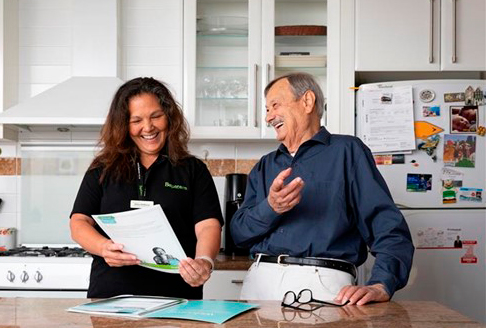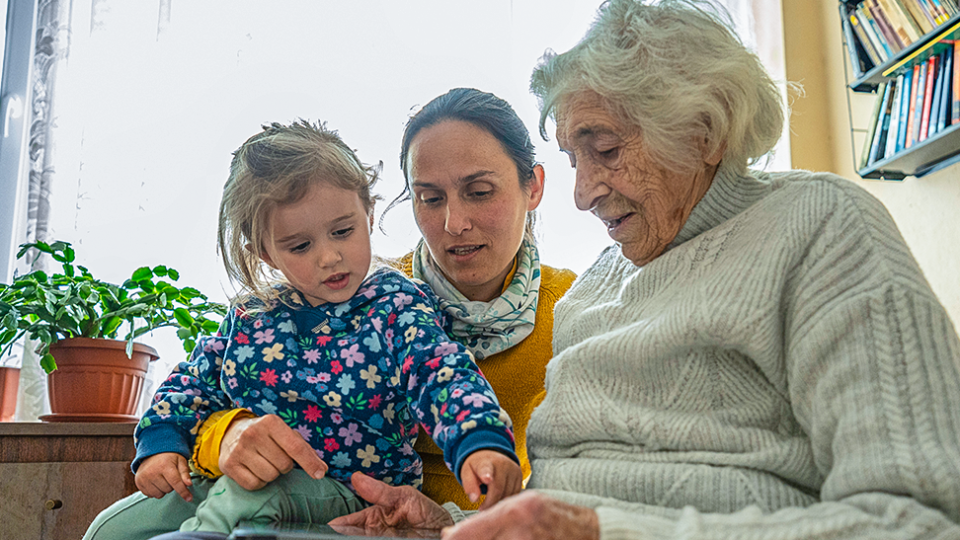How does Home Care work?
- 09 Nov 2023

Key Points:
- If the Commonwealth Home Support Programme (CHSP) no longer provides enough support, a home care package may meet your care needs
- There are four levels of home care packages that offer different degrees of support from basic to high care needs
- Home care services can be customized to meet your specific needs, ranging from occasional help with certain tasks to round-the-clock care, depending on your health and level of independence
- To be eligible for a home care package, there is a specific process that needs to be followed which involves an assessment and approval by the Australian Government’s Aged Care Assessment Team (ACAT)
What are Home Care Packages?
Home Care Packages (HCP) are a part of Australia’s aged care system designed to support and provide aid to older Australians who wish to continue living independently in their own homes.
They are designed for people with more complex needs and go beyond what a Commonwealth Home Support Programme (CHSP) can provide. HCP can be a choice if you need help with everyday tasks, or if the care you need is more complex or intensive.
Depending on your individual circumstances, you may be eligible for a government-funded home care package. In order to determine the right level of funding for you, a personal assessment will be undertaken by the Aged Care Assessment Team. (There is more information about this process below).
To learn more information about home care packages, you can click here for a video overview.
Types of Home Care Packages available
There are four levels of Home Care packages that you may be eligible for:
- Level 1 supports you with basic care needs
- Level 2 supports you with low care needs
- Level 3 supports you with intermediate care needs
- Level 4 supports you with high care needs
What home care services are provided in a Baptcare Home Care Package?
- Transport for shopping or appointments
- Social support by taking you shopping, banking or just providing companionship
- Domestic assistance for household duties like cleaning, clothes washing and ironing
- Personal care assistance with bathing or showering, dressing, hair care and toileting
- Home maintenance for minor repairs and care of your house or garden
- Home medication e.g. installing safety aids such as alarms, ramps and support rails
- Nursing care where a qualified nurse comes to dress a wound or provide continence advice
- Food services such as helping you prepare food and organising delivery of meals
- Help with medication prompts
The Government will outline in your care plan what services you will be able to receive, and this will be organised by your home care provider. You can learn more about care plans at Aged Care Guide.
A Home Care Package should not be used for, and does not replace, care and services that can be accessed through other health programs that you might be eligible for. You should continue to access these when you need them, through your GP and hospitals.
Am I eligible for a Home Care Package?
One of the most common questions people ask at the start of their aged care journey is: “How can I receive government-subsidised aged care services?”
To receive a Home Care Package, you will need to be assessed by an Aged Care Assessment Team. The process involves an assessment of an individual’s care needs and the determination of the proper level of care and services.
You may be eligible if you have:
- noticed a change in what you can do or remember
- been diagnosed with a medical condition or reduced mobility
- experienced a change in family care arrangements, or
- experienced a recent fall or hospital admission.
If you are eligible for a Home Care Package, it’s important to understand what fees you may have to pay, how much the government will contribute, and how your budget works. It’s helpful to do all this before you choose your provider. Having all the information upfront can help you make the right choice for your care needs and financial situation.
The My Aged Care eligibility checker
My Aged Care eligibility checker helps you quickly check if you meet the requirements for an assessment before you apply. Click here to check your eligibility.
This process is designed to ensure that you receive the proper level of care and support based on your unique needs. It helps coordinate and streamline the delivery of home care services so you can continue living independently in your own home while receiving the necessary support.
Remember – Baptcare is here to help
Finding reliable information, understanding your options and applying for a Home Care Package can be difficult and confusing. We’re here to guide and support you, and your questions – no matter how big or small – are always welcome.
Click here to find a wide range of frequently asked questions, with helpful answers including handy links to our website and My Aged Care.
Community news
-

Tips for dealing with life in the sandwich generation
This is part two in our blog series on the sandwich generation. Here are some tips for dealing with the carer’s squeeze experienced by a growing number of Australians, particularly women. Key points: Summary of challenges facing the sandwich generation Tips for dealing with the challenges System reforms needed
- 11 Jul 2025
-

Meet Suraj | Hospitality Manager Residential Aged Care
What makes a residential aged care community truly feel like home? It’s the perfect blend of a warm, inviting atmosphere, devoted and compassionate staff, and thoughtfully crafted meals that foster an undeniable sense of belonging. Today we meet Suraj Ligade, Baptcare’s Hospitality Manager, to explore how his passion for care and culinary excellence nourishes both the bodies and spirits of our treasured aged care residents.
- 10 Jul 2025
-

The sandwich generation phenomenon unpacked
Welcome to the first of two blogs on the theme of the sandwich generation in Australia. In this one, we’ll cover the definition of the sandwich generation, the different types of caring that fall within it and some of the issues those in the sandwich generation face. The second blog will cover tips for dealing with life in the sandwich generation
- 02 Jul 2025
